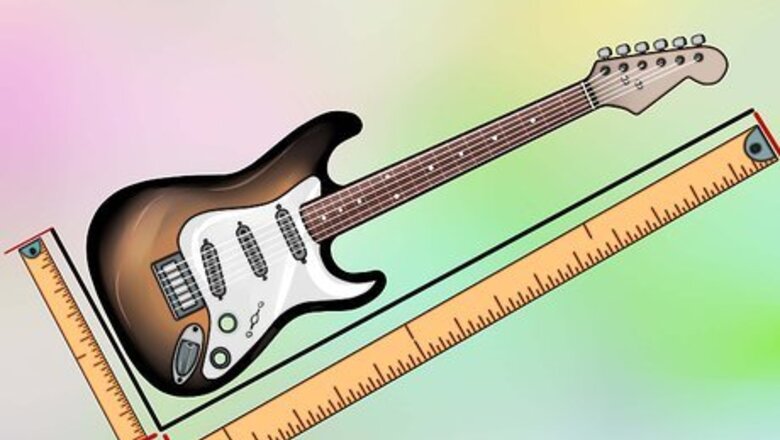
views
Making the Front and Back Panels
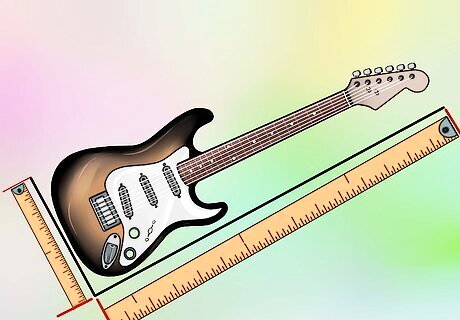
Measure your guitar. Using a tape measure or tailor's tape, measure the approximate length and width of your guitar. Use these dimensions to buy your fabric. Choose exterior fabric in a color or pattern you like. Interior fabric is optional for lining the case and could be in a complementary or contrasting shade to your exterior fabric. Duck cloth is a plain, heavy cotton fabric used for padding; its color won't show.
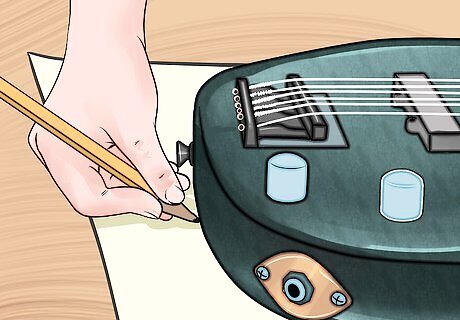
Trace your guitar on paper. Lay the guitar on a piece of paper and trace around it's edge with a pencil. Then make a second, darker line that is ¾ inch larger on all sides to make sure the case is not too tight on your guitar. Cut the shape out along the darker line. Measure all the way around the outside edge of the pattern once you cut it out. About half this number is a good length for a zipper and about double this number is a good length for piping, if you choose to use it.
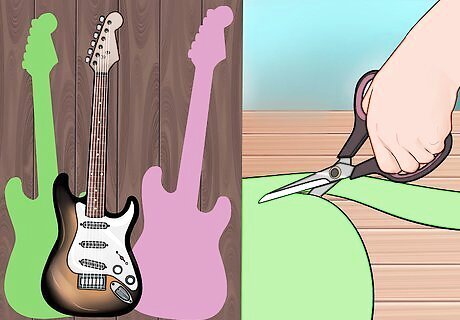
Cut fabric to size for front and back panels. Using the pattern you created on paper, cut out 2 pieces of your exterior fabric, 2 pieces of the duck cloth, and 2 pieces of fleece/batting. Then cut the 2 pieces of fleece/batting to be ½ inch smaller all around to reduce bulk when sewing.
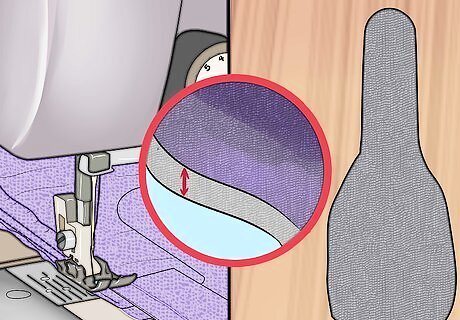
Sew the pieces together. Place 1 piece of your fleece/batting on top of 1 piece of duck cloth, and then place 1 piece of your exterior fabric on top of that. Do the same with the second set of pieces. One set will be the front panel of your case and the other set will be the back panel. Then, use a sewing machine to quilt the pieces together, using straight lines across the length of the fabric. Do this on both panels.
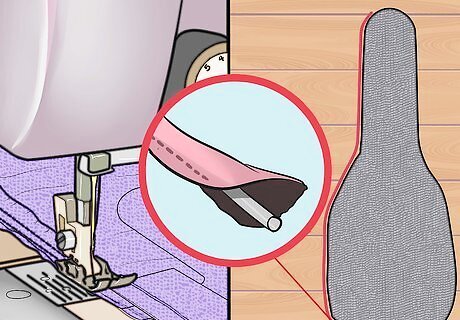
Attach piping (optional). If you want to add piping to the edging of your case for a finished look, you can do so by pinning it around the edge of your front and back panels and then sewing it on with a basting stitch on your machine (straight stitch at the longest length).
Making the Edge of the Case

Measure your guitar for the zipper panel. Measure the thickness or depth of your guitar from front to back to find the width of the zipper panel (The side section of your case that will have a zipper). Add an extra 1 ¼ inch to your measurement for seam allowance, and another ½ inch or so if you want your case to be roomier. Then divide this measurement in half, because you will need two pieces to place the zipper in between. The length of these pieces is the length of the zipper you bought (approximately half the perimeter of your guitar). Width of zipper panel pieces = (guitar depth + 1 ¼ inch + ~½ inch) ÷ 2 Length of zipper panel pieces = length of zipper
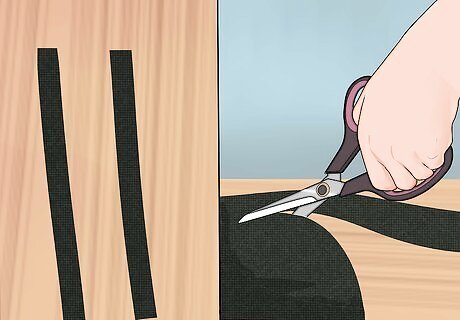
Cut fabric for zipper panel pieces. Using the measurement for your zipper panel pieces, cut 2 pieces of exterior fabric, 2 pieces of duck cloth, and 2 pieces of fleece/batting. Cut the fleece/batting ½ inch smaller all the way around to reduce bulk when sewing. Place the exterior fabric on top of the fleece/batting on top of the duck cloth, and quilt the pieces together as you did with the front and back panels, using one or two lines across the length of the fabric.
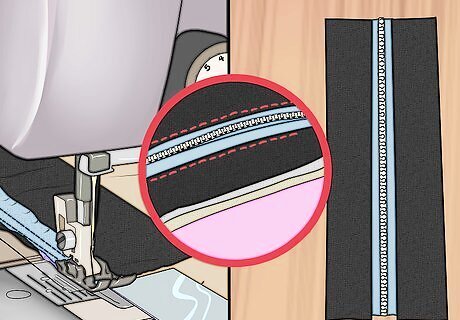
Sew the zipper between the zipper panel pieces. Place the zipper face down against the "right side" (the side with your exterior fabric showing) of one of your quilted zipper panel pieces. Pin it in place, then sew together using a zipper foot on your sewing machine. Do the same to attach the other side of the zipper to your second zipper piece. Then press your zipper panel open and top stitch on either side of the zipper, about ⅛ inch away from it for a finished look that will hold your zipper open on the back side.
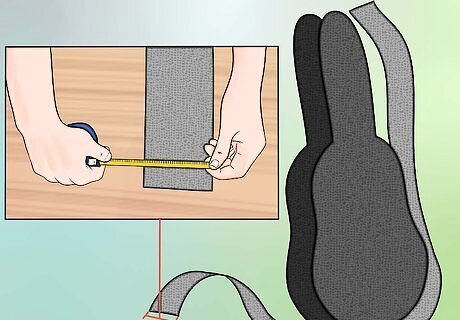
Measure your side panel. Measure around the outside edge of the front or back panel that you've already quilted. The difference between this measurement and the length of your zipper panel is the length of the side panel (the side section of your case that doesn't have a zipper). Add ½ inch for seam allowance. The width is the same as your completed zipper panel. Width of side panel = width of zipper panel with zipper Length of side panel = perimeter of front panel - length of zipper panel + ½ inch
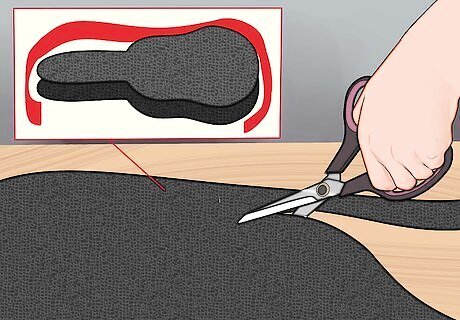
Cut the fabric for your side panel. Using the measurement for your side panel, cut a piece of exterior fabric, duck cloth, and fleece/batting. Cut the fleece/batting ½ inch smaller all the way around to reduce bulk when sewing. Place the exterior fabric on top of the fleece/batting on top of the duck cloth, and quilt the pieces together as you did with the zipper panel, using one or two lines across the length of the fabric.
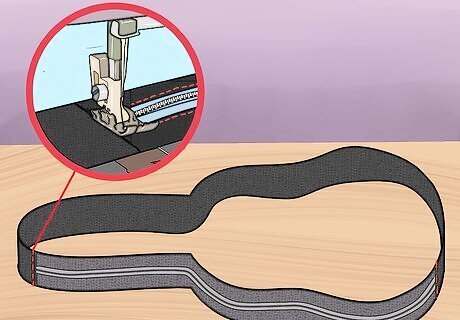
Connect your zipper and side panels together. Line up one end of your zipper panel with one end of your side panel, with right sides (exterior fabric) facing toward each other. Pin and sew these ends together with a straight stitch on your sewing machine, with ¼ inch seam allowance. Repeat with the opposite ends of the two panels. This will create one large loop panel.
Assembling the Case

Attach the loop panel to the back panel. Take the loop panel you created from connecting the zipper and side panels and sew an edge of it to one of the two panels you made for the front and back of the case. The right sides (exterior fabric) of the panels should be facing in. Decide where you want the zipper to be at this stage. Sew the zipper section of the loop panel to the back panel wherever you want the case to open: it could be along one full side of the case, or slightly more curved around the base or neck, depending on how you would want to pull your guitar out. Use a heavy needle in your sewing machine if you're having trouble getting through all the layers of fabric and duck cloth. If you decided to use piping, make sure it is sandwiched between the two panels and that your stitch comes as close to the piping as possible. Use a zipper foot on your sewing machine for this.
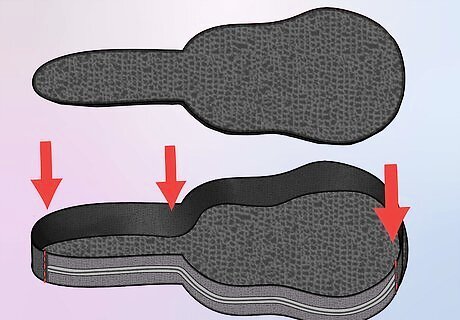
Attach the front panel. Pin the front panel to the other edge of the loop panel and sew together as you did with the back panel. Make sure you unzip the zipper first so you have a way to turn it right side out when all the sewing is done.
Making a Handle
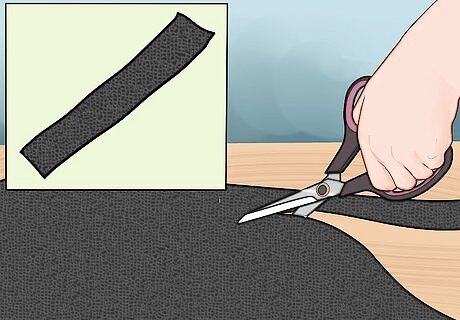
Cut the fabric. Using scraps or extra fabric, cut a rectangle depending on what size you feel would be comfortable to hold. Add and inch to either side of the length for where you will sew it to the case. Add about ¼ inch on every side, and fold those in to hide the raw edges. Sew a straight stitch ⅛ inch from each side to make it look finished. Double or triple the fabric or add fleece/batting inside two layers of it if you want to make the handle sturdier. You can even roll up a section of material to make a rounder handle.
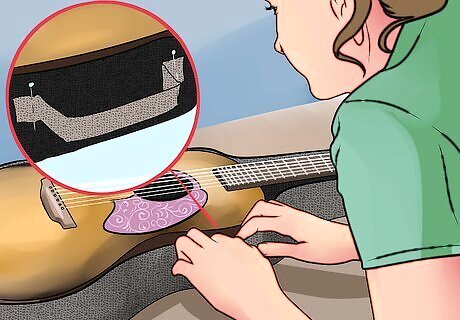
Attach the handle to the case. Put your guitar inside the case and pin the handle to the side panel (not the zipper panel) section of your case. Pick it up from the handle and see how the weight of the guitar is balanced. Move the handle to where the weight will be balanced equally, then sew a 1 inch square on each end of the handle to the case.
Adding Lining (Optional)
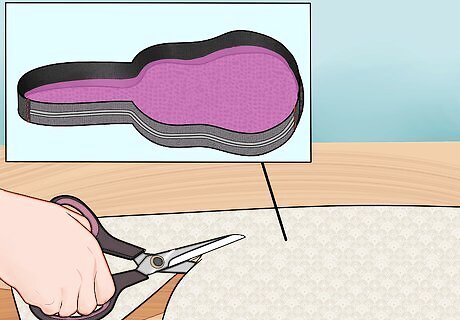
Cut interior fabric for lining. Use the same measurements for each of the panels you made for the case to cut your interior fabric into 2 front and back pieces, 2 pieces for either side of the zipper, and one side piece.
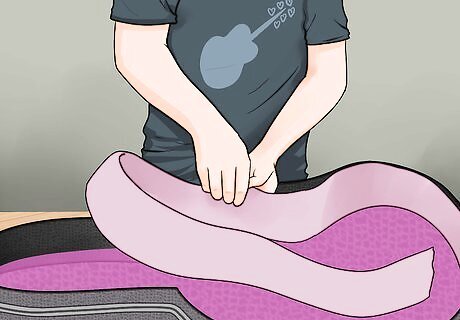
Attach the side and zipper pieces. Create the same loop as you did with the zipper and side panels, but without the zipper. Place the two pieces for either side of the zipper next to each other and fold back ¼ inch where the zipper would be. Then sew the ends of the zipper pieces to the ends of the side piece like you did to make a loop before, but keeping the small folds for a zipper in place. Sew this loop to the front and back lining pieces like you did with the main case.
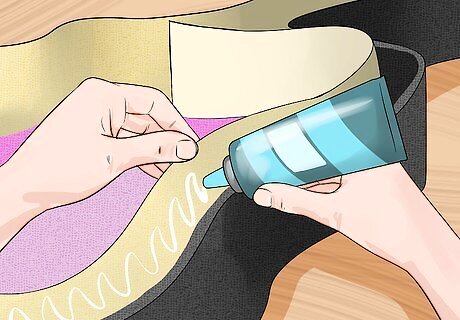
Sew or glue the lining into the case. Use fabric glue or hand sew the lining to the inside of the case by matching the seam allowance of the lining to the seam allowance of the main case. Fold under any raw edges as you go.



















Comments
0 comment